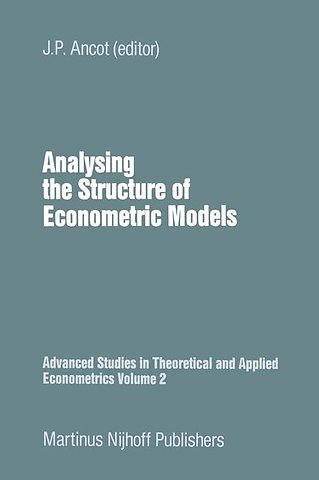Analysing the Structure of Economic Models
Samenvatting
Understanding the structure of a large econometric model is rather like the art of winetasting or like the art of playing a musical instrument. The quality of a wine results from a complex combination of various elements such as its colour which should be clear and crystalline, its smell which can be decomposed into a general aroma and a variety of particular characteristics, more or less persistent depending on the type and the age of the wine, its taste, of course, which again is a complex system whose equilibrium and charm depend on the whole set of ingredients: alcohol, tannin, glycerine, sugar, acidity . . . Similarly, a clarinetist's musicianship depends on the quality of his instrument, on his embouchure, fingering, tonguing and articu lation techniques, on his sense for rhythm, phasing and tone colour. However, the enchantment produced by a Romanee-Conti or by a brilliant performance of Brahm's F minor sonata for clarinet and piano arises from a process which is at the same time time much simpler and much more complex than the straightforward juxtaposition of individual causal relations. In recent years econometricians and macro-economists have been challenged by the problem of keeping abreast with an ever increasing number of increasingly more complex large econometric models. The necessity of developing systematic analytical tools to study the often implicit and hidden structure of these models has become more evident.
Specificaties
Inhoudsopgave
Anderen die dit kochten, kochten ook
Net verschenen
Rubrieken
- aanbestedingsrecht
- aansprakelijkheids- en verzekeringsrecht
- accountancy
- algemeen juridisch
- arbeidsrecht
- bank- en effectenrecht
- bestuursrecht
- bouwrecht
- burgerlijk recht en procesrecht
- europees-internationaal recht
- fiscaal recht
- gezondheidsrecht
- insolventierecht
- intellectuele eigendom en ict-recht
- management
- mens en maatschappij
- milieu- en omgevingsrecht
- notarieel recht
- ondernemingsrecht
- pensioenrecht
- personen- en familierecht
- sociale zekerheidsrecht
- staatsrecht
- strafrecht en criminologie
- vastgoed- en huurrecht
- vreemdelingenrecht






